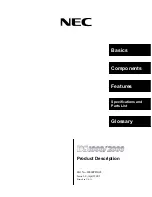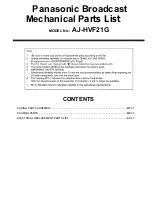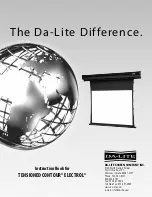
User's Guide ADI-6432 © RME
35
15.2 Lock, SyncCheck and SyncAlign
Digital signals consist of a carrier and the data. If a digital signal is applied to an input, the re-
ceiver has to synchronize to the carrier clock in order to read the data correctly. To achieve this,
the receiver uses a PLL (Phase Locked Loop). As soon as the receiver meets the exact fre-
quency of the incoming signal, it is locked. This
Lock
state remains even with small changes of
the frequency, because the PLL tracks the receiver's frequency.
If an AES signal is applied to the ADI-6432, the corresponding SYNC LED starts flashing. The
unit indicates LOCK, i. e. a valid input signal (in case the signal is also in sync, the LED is con-
stantly lit, see below).
Unfortunately, LOCK does not necessarily mean that the received signal is correct with respect
to the clock which processes the read out of the embedded data. Example [1]: The ADI-6432 is
set to 44.1 kHz internal clock, and a CD-Player is connected to input AES1. The corrsponding
LED will start flashing immediately, but the CD-Player's sample rate is generated internally, and
thus slightly higher or lower than the ADI-6432's internal sample rate. Result: When reading out
the data, there will frequently be read errors that cause clicks and drop outs.
Also when using multiple inputs, a simple LOCK is not sufficient. The above described problem
can be solved elegantly by setting the ADI-6432 from internal clock to AES (its internal clock will
then be the clock delivered by the CD-Player). But in case a DAT recorder is connected as a
second source, there will again be a slight difference in the sample rate, and therefore clicks
and drop outs [2].
In order to display those problems optically at the device, the ADI-6432 includes
SyncCheck
®
.
It checks all clocks used for
synchronicity
. If they are not synchronous to each other (i. e. abso-
lutely identical), the SYNC LED of the asynchronous input flashes. In example 1 it would have
been obvious that the SYNC AES1 LED kept on flashing after connecting the CD-Player. In
example 2, SYNC AES1 would be constantly lit, but the SYNC LED of the input used by the
DAT would be flashing.
In practice, SyncCheck allows for a quick overview of the correct configuration of all digital de-
vices. This way one of the most difficult and error-prone topics of the digital studio world finally
becomes easy to handle.
A special problem occurs with devices offering several AES or SPDIF inputs. While with MADI
all 64 channels share the same clock base, with AES there are several completely independant
receivers with their own PLLs and data buffers. Therefore a random error of ± 1 sample differ-
ence between the stereo pairs can occur. The ADI-6432's exclusive
SyncAlign
®
technology
avoids this effect and guarantees sample synchronicity among all four stereo channels.
Содержание ADI-6432
Страница 4: ...4 User s Guide ADI 6432 RME ...
Страница 5: ...User s Guide ADI 6432 RME 5 User s Guide ADI 6432 General ...
Страница 13: ...User s Guide ADI 6432 RME 13 User s Guide ADI 6432 Usage and Operation ...
Страница 25: ...User s Guide ADI 6432 RME 25 ...
Страница 28: ...28 User s Guide ADI 6432 RME ...
Страница 29: ...User s Guide ADI 6432 RME 29 User s Guide ADI 6432 Technical Reference ...
Страница 39: ...User s Guide ADI 6432 RME 39 16 Block Diagram ...








































